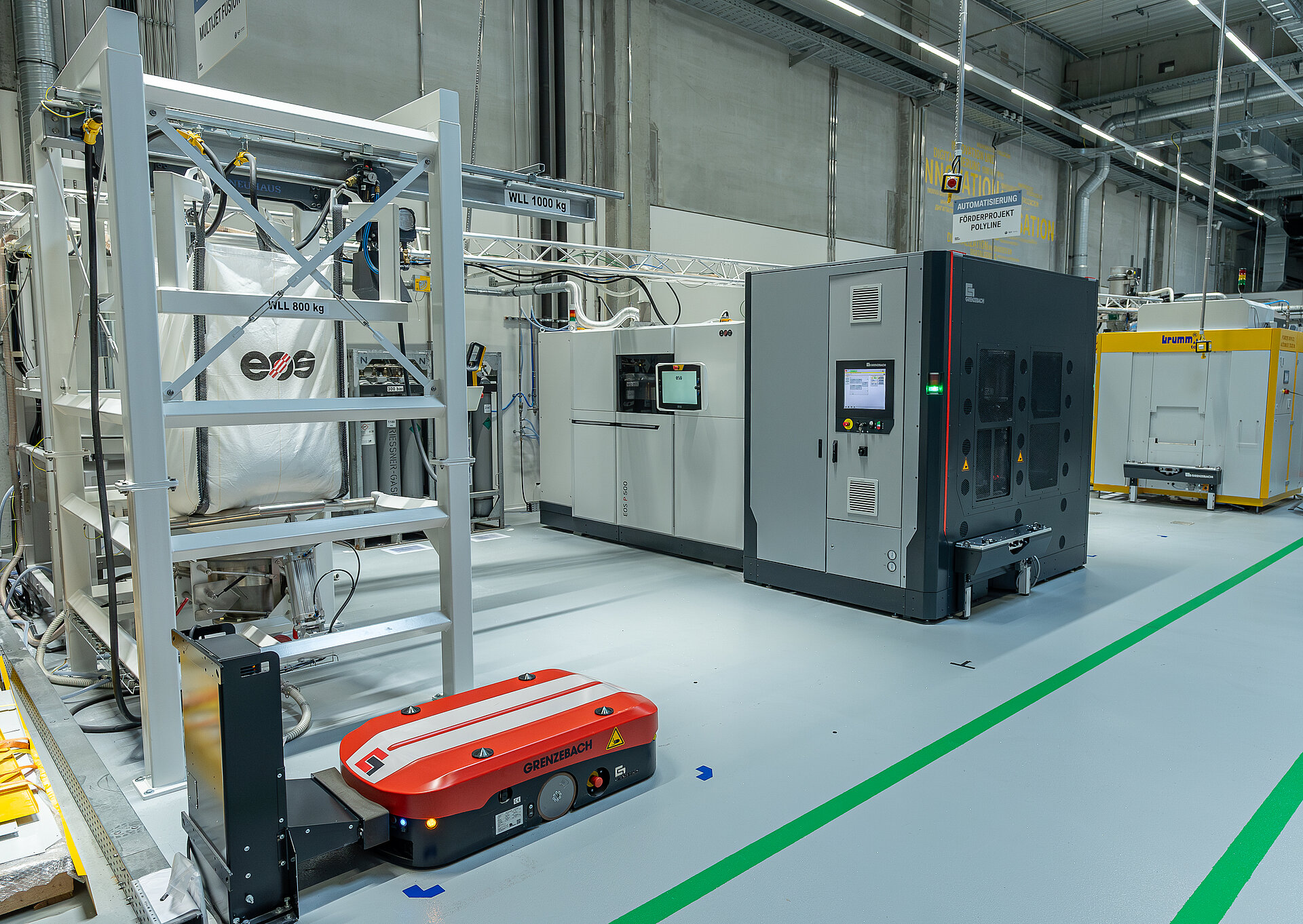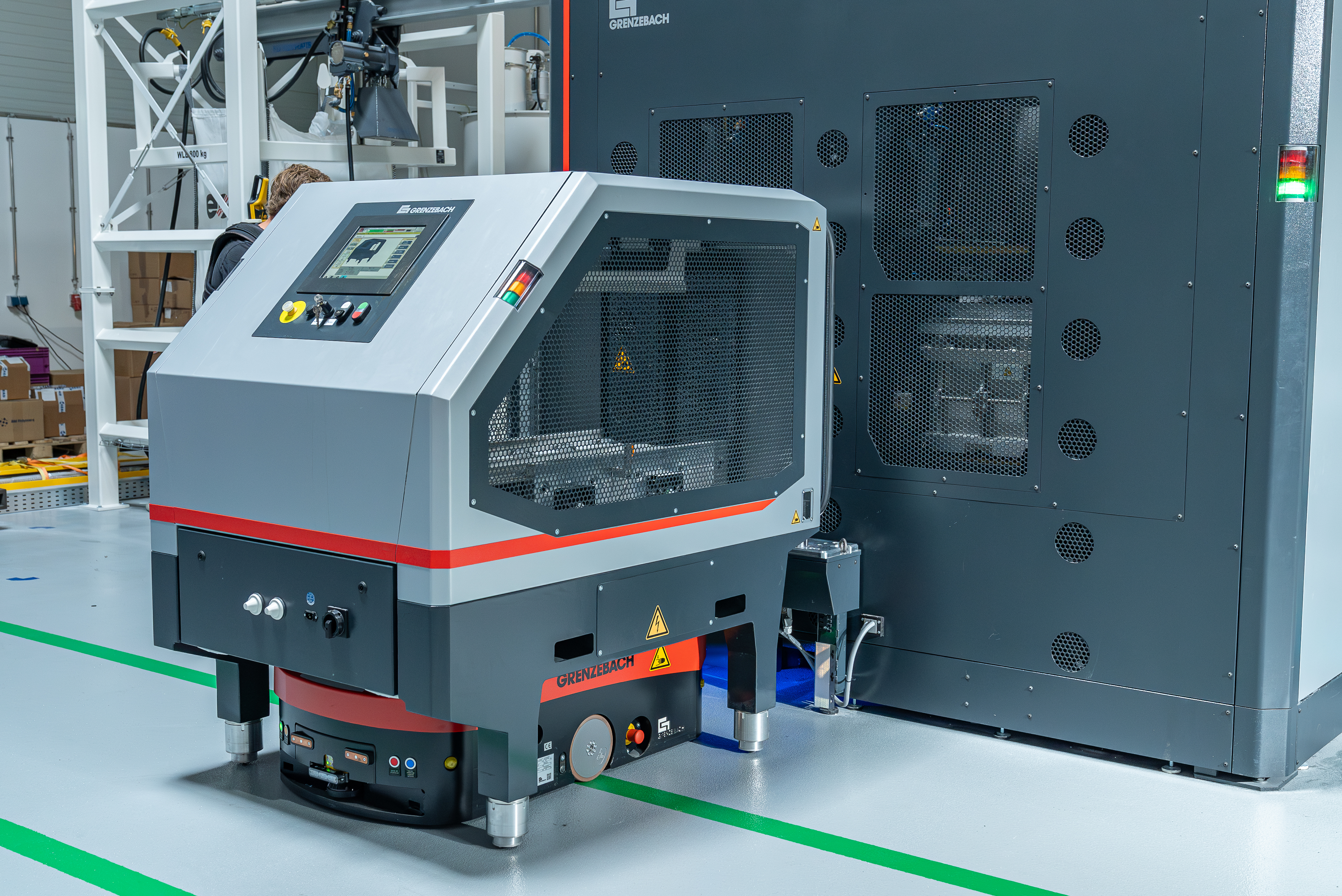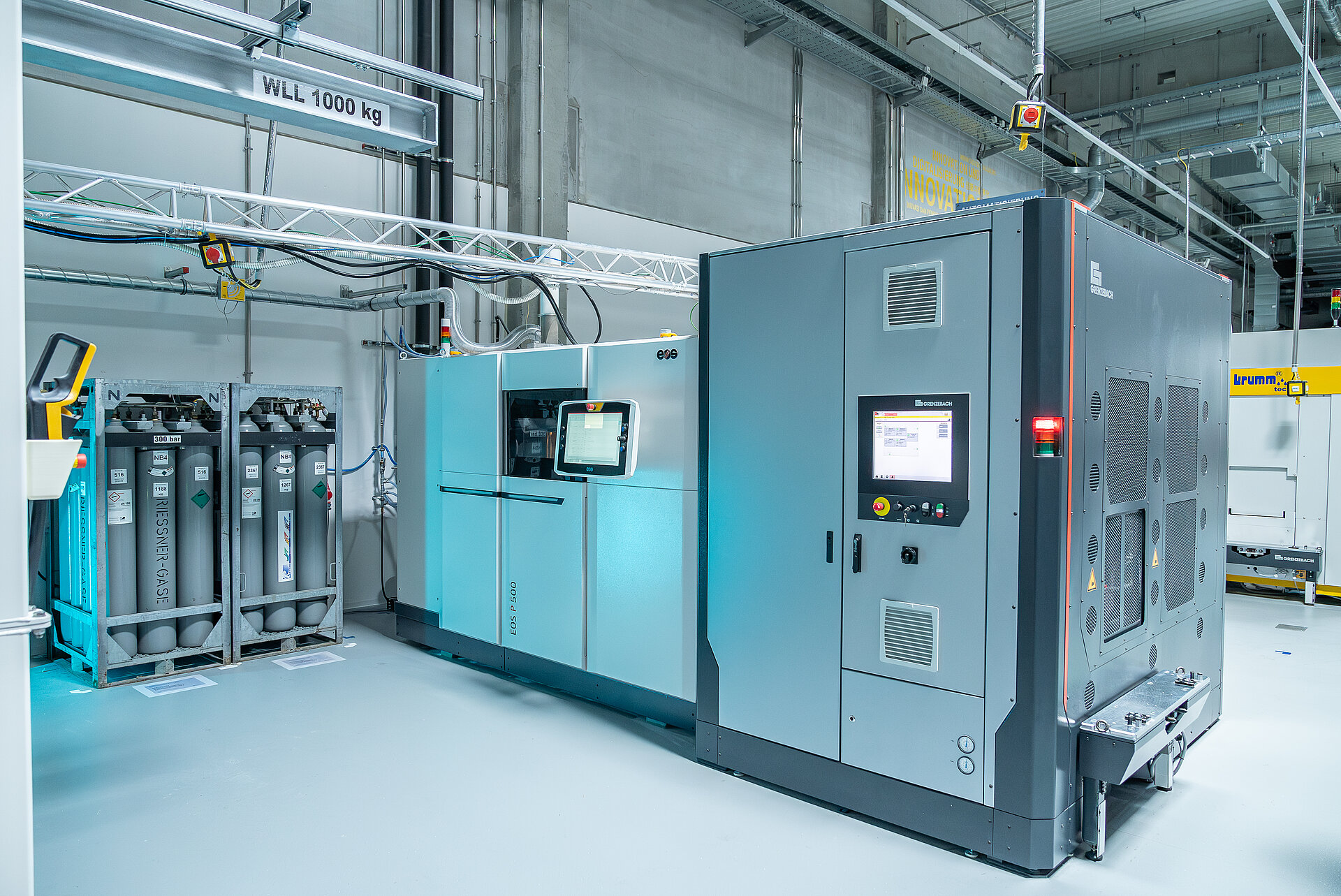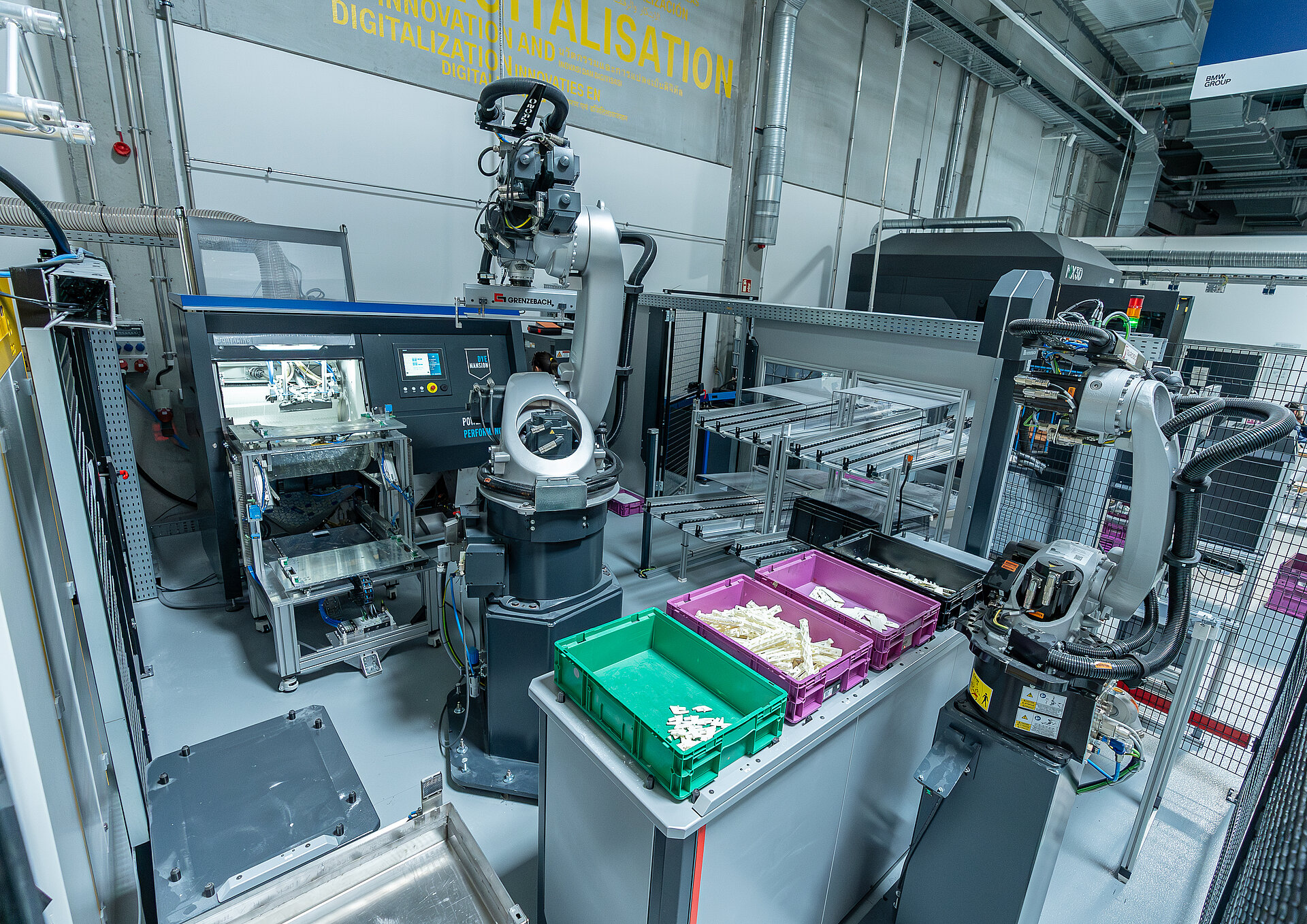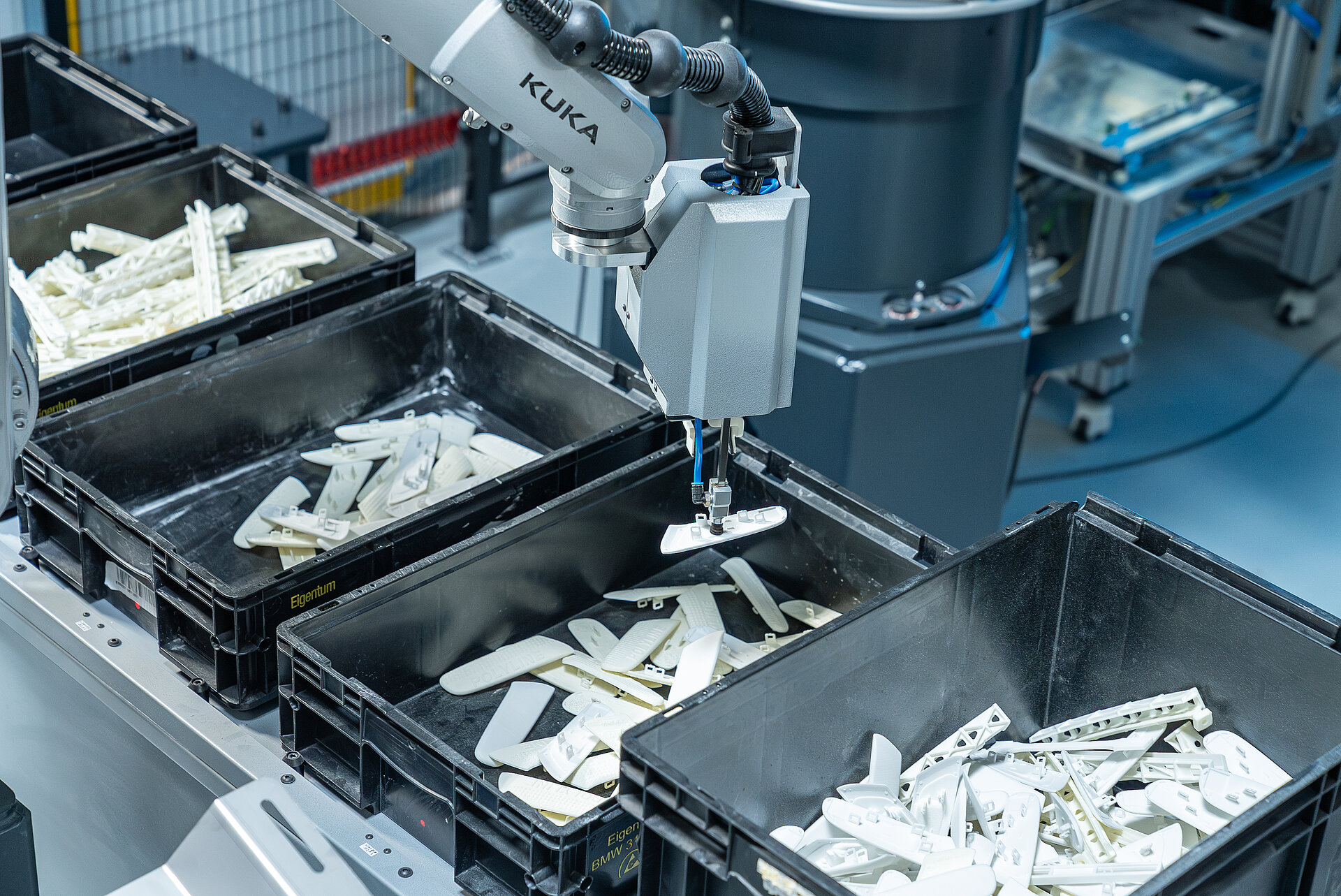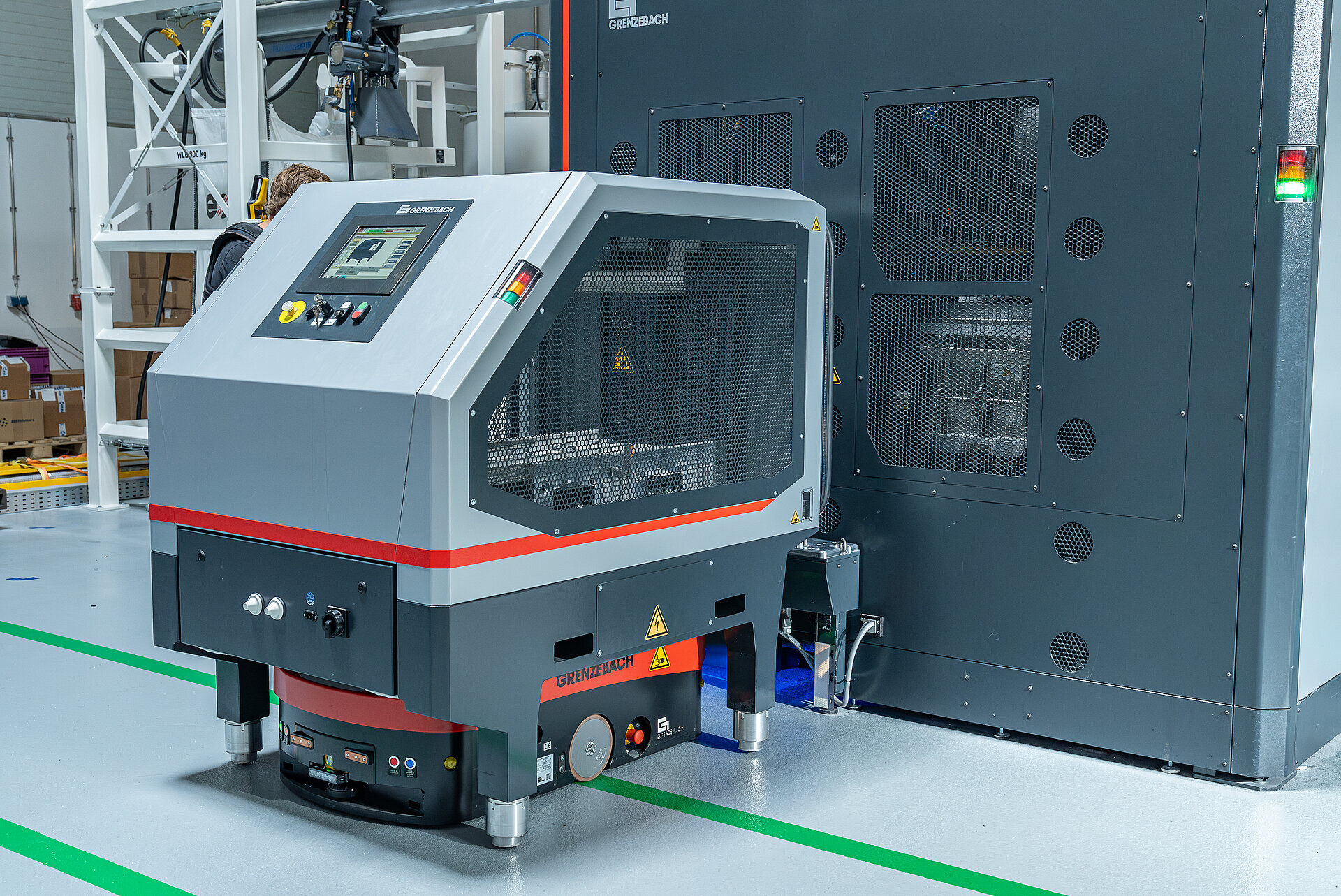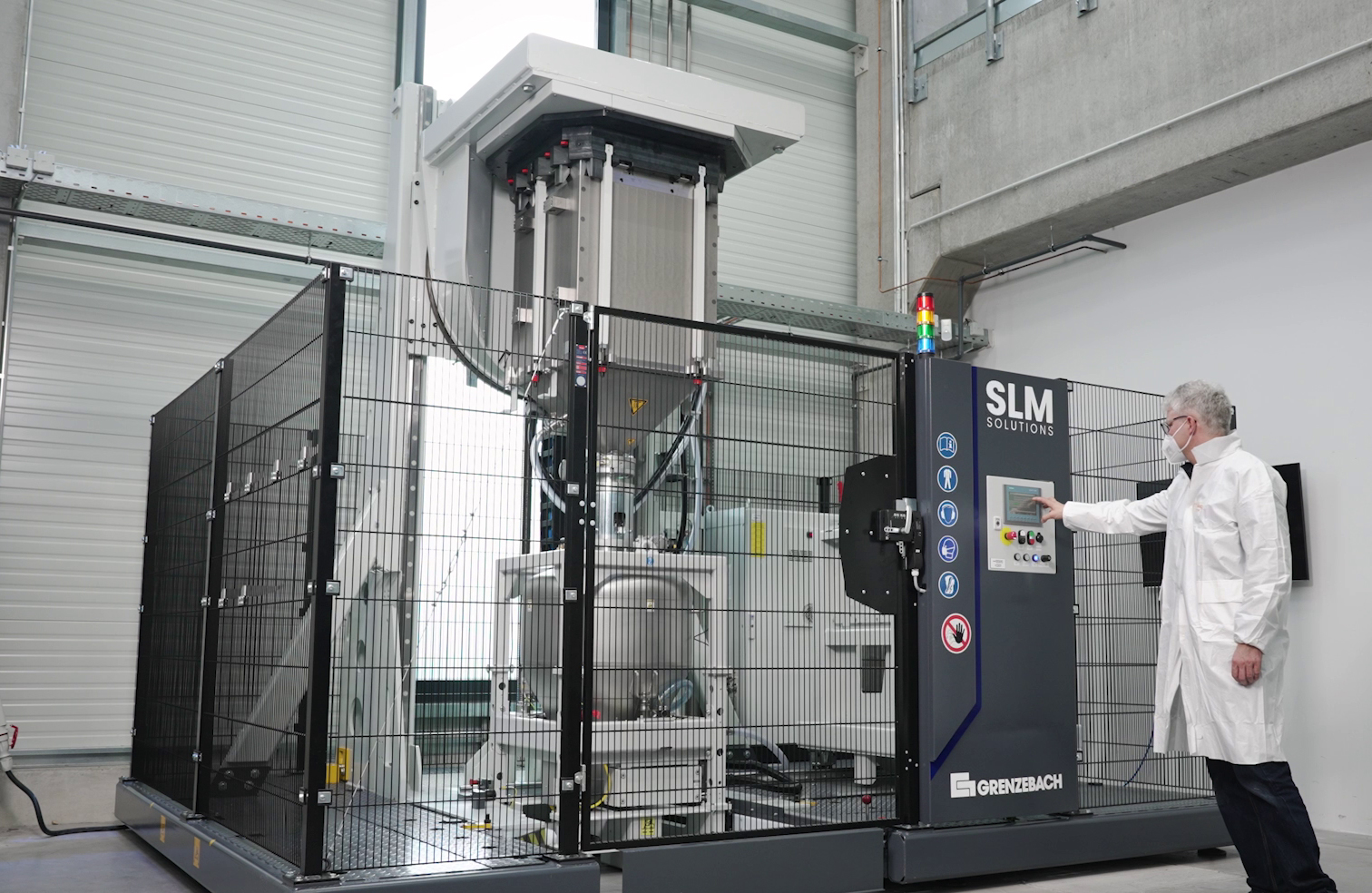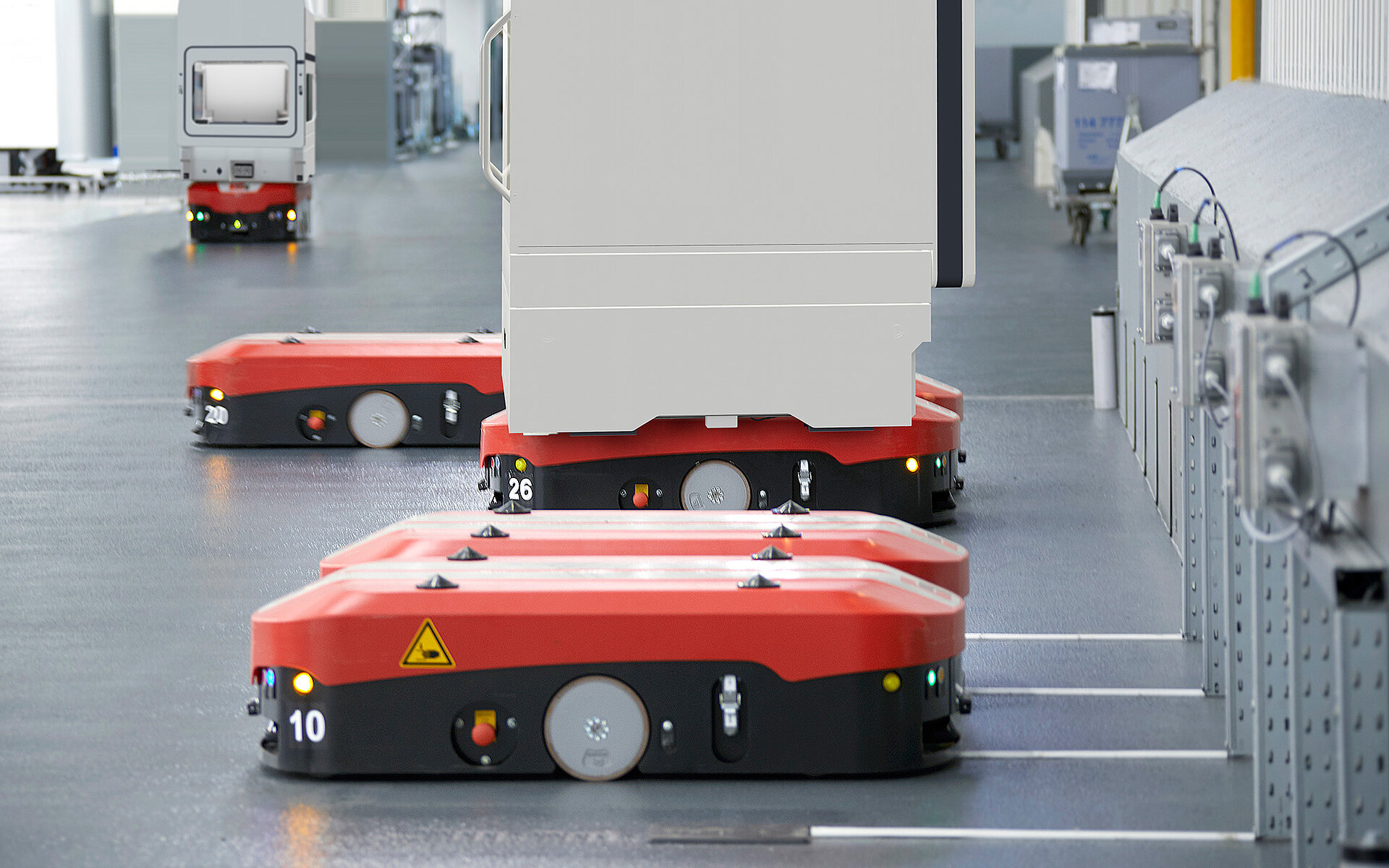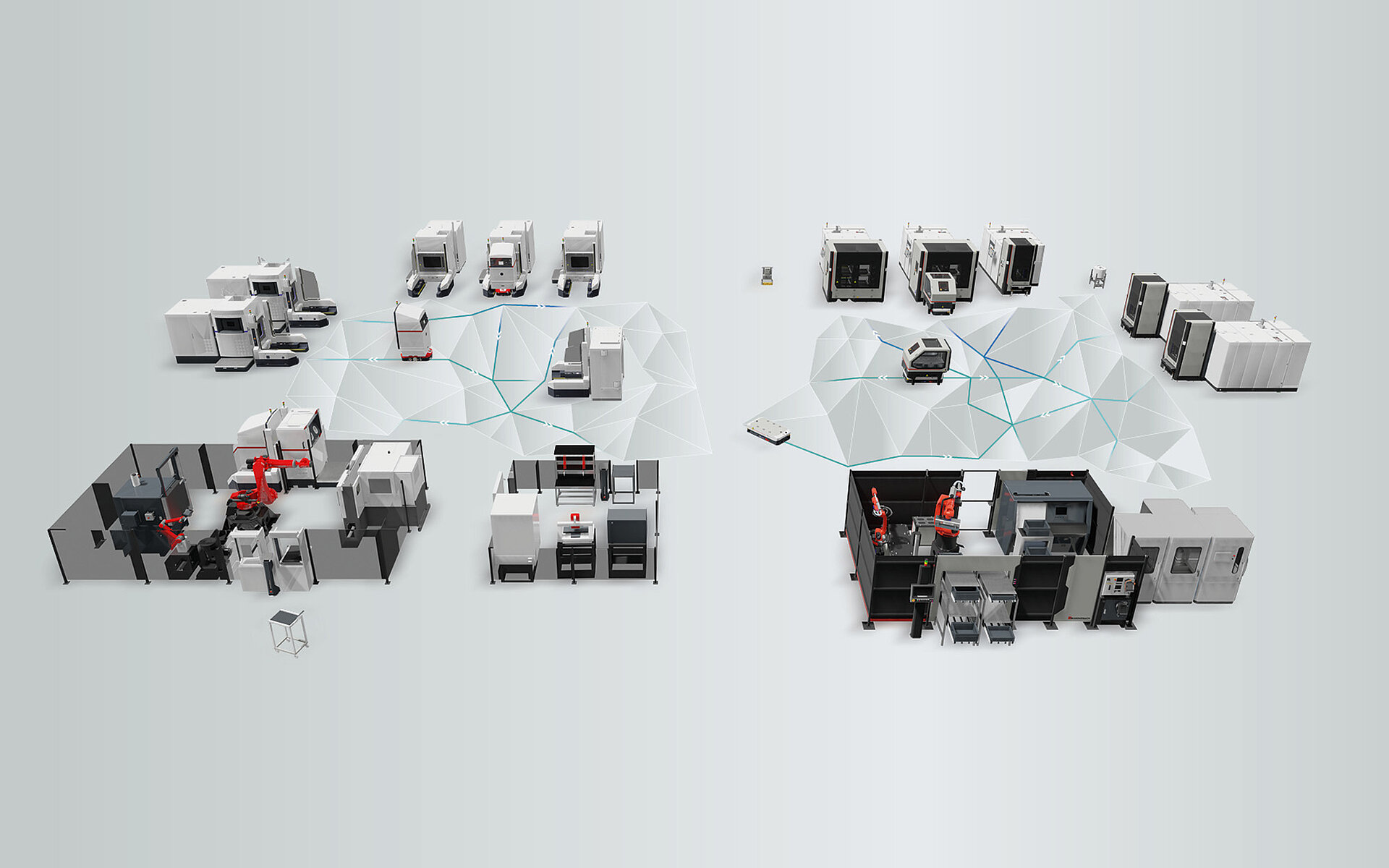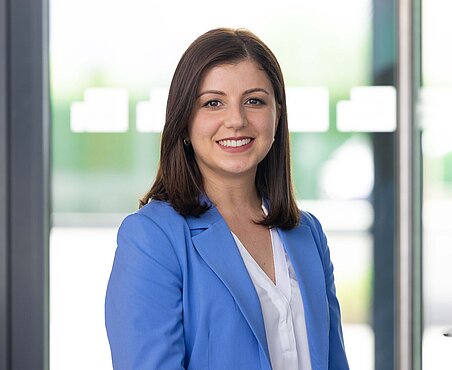DyeMansion, EOS & Grenzebach successfully implemented first ever automated AM production line for polymer parts at scale at BMW Group
MUNICH/Germany. The POLYLINE project achieved the first successful implementation of an automated additive manufacturing production line for polymer parts at scale. At the Additive Manufacturing Campus of BMW, the project partners made real 3D printing serial production with high throughput a reality. It is therefore not surprising that after the defined three years of project time, BMW, DyeMansion, EOS and Grenzebach – four partners of the consortium – draw a very positive balance.
“The successful POLYLINE project shows that an end-to-end automated factory is possible with 3D printing – and this is just the beginning”, says Philipp Kramer, CTO and Co-founder of DyeMansion.
Dr. Blanka Szost-Ouk, Head of Additive Manufacturing, Predevelopment & Planning at BMW Group, adds: “The POLYLINE automated process chain fits into the next generation printers and our standard production requirements, is a system-agnostic solution due to their standardized interfaces. Which is crucial for scaling up Additive Manufacturing.”
Fabian Krauß, Head of Polymer Systems at EOS, looks ahead: “We have developed this at BMW for the automotive industry and we can now adopt and adjust it to other industries.”
“The main advantages of automation are to increase the productivity of the equipment, to reduce the downtime of the equipment, and to create a safe work environment for the employees”, specifies Oliver Elbert, Head of Additive Manufacturing at Grenzebach.
How the AM lighthouse project POLYLINE worked
The roles of BMW, DyeMansion, EOS & Grenzebach
BMW
BMW, the premium automotive manufacturer, has given the project a home in its Additive Manufacturing Campus in Munich and has taken over the coordination of the different project partners.
EOS
EOS, the world's leading technology provider in industrial 3D printing of metals and plastics, was responsible for the printing with its EOS P 500 which sets a new standard in terms of industrial Additive Manufacturing. It can be fully automated and fully integrated. The level of automation and integration then differs from the use case and can be adjusted specifically to each situation. The machine ensures the highest reliability, the highest level of homogeneity, repeatability, and reproducibility.
Grenzebach
As a specialist in the automation of industrial processes, Grenzebach contributed its expertise in the intelligent and safe networking of manufacturing processes to the project. This includes the Exchange P500/4 solution, which is placed directly at the printer and automatically replaces the exchange frame and cools the build jobs in the buffer stations. The automated transport of the exchange frame to the next stations with the secure transport container and an automated guided vehicle (AGV). And the robotic cell with KLT handling and bin-picking robots for further processing and sorting of components. In addition, the joint development of automated hardware and software interfaces suitable for industrial use in all process stations was a central component of the Grenzebach work package.
DyeMansion
DyeMansion, the global leader in post-processing solutions for industrial polymer 3D printing, was responsible for delivering the right look and feel for the final application – so all areas of post-processing: cleaning, surfacing, and coloring. DyeMansion’s processes are completely traceable, ensuring consistent quality. The Powershot DUAL Performance fulfills all requirements for physical automation, so it can run batch after batch continuously without the need for an operator to be present.
Together with all other project partners and thanks to the funding by the German Federal Ministry of Education and Research, BMW, DyeMansion, EOS and Grenzebach achieved to develop a next-generation digitalized production line.
Watch the Success Story of the lighthouse project POLYLINE
About POLYLINE
The POLYLINE project brought together 15 industrial and research partners from Germany to develop a next-generation digitalized production line. This line has been used to produce plastic parts for the automotive industry. The aim was to complement conventional production techniques (e.g. machining, casting, etc.) with Additive Manufacturing (AM) in the form of high-throughput production line systems. The project was funded by the German Federal Ministry of Education and Research with a total of 10.7 Mio. Euro. The project had a defined duration of three years. After the successful completion of the POLYLINE project BMW, DyeMansion, EOS and Grenzebach – four partners of the consortium – draw a very positive balance.
Visit the project website to learn more. Find the announcement press release of May 2020 here.
POLYLINE project partners involved: BMW, DyeMansion, EOS, Grenzebach, Krumm e.K., 3yourmind, Optris, Additive Marking, Olschner, Uni Paderborn, Uni Duisburg-Essen, Uni Dortmund, Fraunhofer IGCV, Universität Augsburg, Fraunhofer IML
Associated partners: WAZP, STIHL, Protiq, GS1 Germany, Oechsler, ZF, Main Incubator, TOPTICA, Prototal, 1zu1
About BMW GROUP – ADDITIVE MANUFACTURING
With its BMW, MINI, Rolls-Royce and BMW Motorrad brands, the BMW Group is the world's leading premium manufacturer of cars and motorcycles and a provider of premium financial and mobility services. The BMW Group production network comprises 31 production and assembly plants in 15 countries; the company has a global sales network with representatives in over 140 countries. The use of 3D printed parts is becoming increasingly important for the BMW Group. In the past ten years alone, the company has produced more than one million components for use in, for example, test vehicle construction and end-customer vehicles. As part of POLYLINE, the BMW Group is drawing up a catalogue of requirements to ensure that the production line developed meets the standards of the automotive industry and can therefore be integrated into existing production structures. In the future, the demonstrator line will be set up in the new Additive Manufacturing Campus near Munich. There, cause-and-effect relationships will be jointly researched as part of the project.
You can find detailed company information at: www.bmwgroup.com
About DyeMansion
DyeMansion is the global leader in post-processing solutions for industrial polymer 3D-printing that turns 3D-printed raw parts into high-value products. From perfect fit eyewear to personalized car interiors, their technology makes 3D-printed products become a part of our everyday life. Starting in 2015 with the first industrial coloring solution for powder bed fusion parts, the Munich-based company extended its portfolio with advanced part cleaning and surfacing solutions for a wider range of 3D-printing technologies in the field of plastics. Today, DyeMansion’s Print-to-Product workflow combines industry-leading hardware with the widest range of color and surfacing options on the market. Their systems are applicable for Industry 4.0 and can be integrated seamlessly into various production processes. The ability to provide a flexible solution for both small batches and high volumes makes DyeMansion a trusted partner for future factories. Through close collaboration with customers across all industries, the 3D-finishing technology and expertise continuously grow with the market. Reduced cost per part, unmatched quality, and high sustainability are core values that drive each innovation of the fast-growing company. In addition to these principles, finding the right finish for every application is what drives them.
Learn more about DyeMansion and visit www.dyemansion.com, LinkedIn, Instagram, Twitter or YouTube.
About EOS
EOS provides responsible manufacturing solutions via industrial 3D printing technology to manufacturers around the world. Connecting high quality production efficiency with its pioneering innovation and sustainable practices, the independent company formed in 1989 will shape the future of manufacturing. Powered by its platform-driven digital value network of machines and a holistic portfolio of services, materials and processes, EOS is deeply committed to fulfilling its customers’ needs and acting responsibly for our planet.
Graphic Material EOS Press Center
About Grenzebach
As a specialist in the automation of industrial processes, Grenzebach is contributing their expertise in the intelligent and safe networking of production processes to the project. In cooperation with the partners, Grenzebach takes over responsibility for the material flow and transport between the individual processes. A central component here is the joint development of automated hardware and software interfaces towards all process stations suitable for industrial use. Overall aim is to develop a holistic automation concept for the pilot line.
Further information can be found at: www.grenzebach.com
